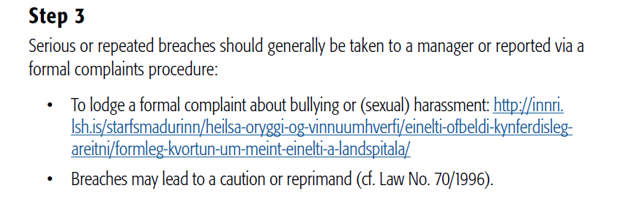Lost in translation? A hospital-wide communication compact
- Páll Matthíasson

- Jun 10, 2025
- 4 min read
Updated: Jun 23, 2025
When things get lost in translation, there is a breakdown of communication. This is a major problem in healthcare, where it is literally vital that people can communicate their ailments clearly. I was the CEO of Landspítali, the national hospital of Iceland, for over 8 years and one of the hardest parts of my job was to learn about serious adverse events in our service, and reviewing their causes. Even if we as a hospital prided ourselves on a safety culture, it was still a fact that we had on average around ten serious incidents per year. These were incidents where people came to serious harm or died unexpectedly. We used various tools to improve our safety. Ten years ago we started using a method pioneered by the NHS in England, where we did a root cause analysis of serious adverse events (1). By early 2018 it was clear that one common factor in nearly all adverse events was a breakdown of communication. Information didn´t get through. This happened for various reasons, but we felt that poor communication was a major reason, and only partly due to a lack of structured handover etc. Other issues such as a lack of trust, conflict and a lack of respect played a far greater part in this problem than we had thought was possible.
Our conclusion was that it was necessary to address this. We decided to make a communication compact. A set of agreed upon behaviours that hopefully would reduce the likelihood of poor communication. The Communication Compact of Landspítali, Iceland's National University Hospital, that we set up, is a comprehensive framework designed to make patients feel safer and improve staff well-being through clear, effective, warm, and positive communication (2). It applies to all those working at the hospital, irrespective of position or profession.
We developed the compact in 2018 in over 50 development meetings with input from over 700 employees across various departments. The Compact reflects over 900 real-life experiences and emphasizes the importance of clear and positive interactions in the healthcare environment. These cases included both positive examples and examples of what could be improved in communication at the hospital. It is therefore based on real-life experiences of staff in all fields. The specific content of the cases examined were presented in eight sections, which make up the text of the communication compact.
The compact was presented to the staff of Landspítali on its web sites – both internal and external, through communications on social media (mainly Facebook and Twitter), through demonstration videos and by posters. Awareness was also heightened by producing tags and buttons for the staff to wear. In addition, news and stories by text and video have been produced on a regular basis.

Purpose and development
The primary goal of the Communication Compact is to foster a culture of mutual respect and collaboration among all hospital staff, regardless of their role or profession. By promoting clear and compassionate communication, the Compact aims to improve the overall quality of care provided to patients and create a supportive work environment for employees. The development process involved a series of meetings where staff shared both positive and negative experiences related to workplace communication, ensuring that the Compact addresses real and relevant issues.
Core principles
The Compact is structured around eight key themes, that we coined through the workshops with staff. Each theme outlines behaviors that should be embraced or avoided to promote effective communication:
Welcome: Encourages staff to be warm and considerate, emphasizing the importance of greetings, introductions, and offering assistance.
Respect: Highlights the necessity of treating everyone—patients, relatives, and colleagues—with dignity, ensuring that all voices are heard and valued.
Responsibility: Focuses on accountability, urging staff to take ownership of their actions and communicate openly about any issues or delays.
Trust: Stresses the importance of building and maintaining trust through honesty, reliability, and consistent communication.
Support: Encourages a culture of support, where colleagues assist one another and share knowledge to enhance team performance.
Feedback: Promotes the giving and receiving of constructive feedback to facilitate continuous improvement.
Conflict Resolution: Provides guidance on addressing and resolving conflicts in a respectful and effective manner.
Well-being: Emphasizes the role of positive communication in supporting the mental and emotional well-being of both staff and patients.
Implementation and impact
Every staff member at Landspítali is expected to adhere to the principles outlined in the Communication Compact. By doing so, the hospital aims to create a cohesive and harmonious work environment that not only benefits employees but also enhances the quality of patient care. The Compact serves as a living document, continually guiding the hospital's communication practices and contributing to its mission of delivering exceptional healthcare services.
I am now a clinician, working within community teams, and I find that the communication compact is a relevant document in our work. In the last year, yet another “wave” of focus on the compact has taken place in the health system. Every month a theme from the compact has been highlighted and during team meetings we read out examples of preferred and less preferred behaviour.
The communication compact was generally well received and people felt it supported leaders and staff in resolving communication violations. Does it work, however? I don´t know to be honest! The number of adverse events fluctuates from one year to the next, so hard data is difficult to come by. But to keep a focus on communication and its importance is certainly useful. Having a language and a model for behaviour helps, as does having an agreed upon way to highlight bad behaviour (“red carding”) and resolving conflict. Healthcare is all about communication, between patients and staff and in-between staff. Having a structured approach to the “right” behaviour, may seem superfluous, but experience tells us obvious things need to be spelled out as well. Less is lost in translation that way! □
A chapter of the communication compact. Click on images to enlarge.
A chapter of the communication compact: on how to respond to breaches of the compact. Click on images to enlarge.
References
International examples of lean in healthcare. Case studies of best practices. Mead E, Stark C, Thompson M. Chapter 8: Organisation-wide implementation of lean in Iceland. Matthiasson P, Olgeirsson B, Sigurbjörnsdóttir GB.
A webpage from the website of Landspitali- The National University Hospital of Iceland. Extracted from: https://www.landspitali.is/um-landspitala/fyrir-starfsfolk/samskiptasattmali-landspitala/communication-compact/






















